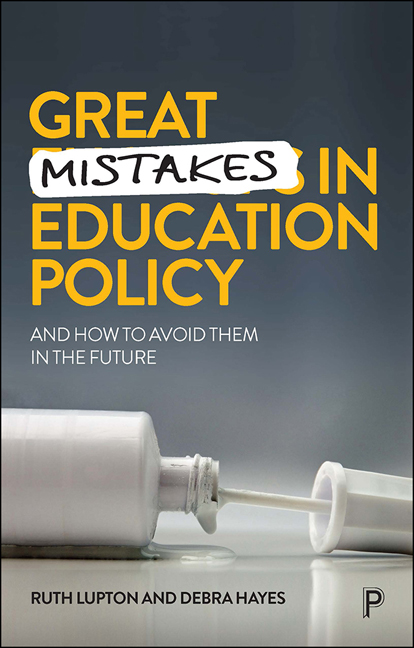Book contents
- Frontmatter
- Contents
- List of tables and boxes
- List of abbreviations
- Notes on the authors
- Acknowledgements
- 1 Introduction
- 2 Setting the scene
- 3 Tests, tests, tests
- 4 Schooling that works for some but not for others
- 5 Teachers making less of a difference
- 6 Mistake #1: turning to the market
- 7 Mistake #2: letting test scores drive policy
- 8 Mistake #3: over-prescribing teachers’ work
- 9 Mistake #4: misunderstanding educational inequalities
- 10 Mistake #5: leaving education out of education policy making
- 11 Synthetic phonics: a ‘perfect storm’ of policy mistakes
- 12 There are alternatives
- References
- Index
11 - Synthetic phonics: a ‘perfect storm’ of policy mistakes
Published online by Cambridge University Press: 23 December 2021
- Frontmatter
- Contents
- List of tables and boxes
- List of abbreviations
- Notes on the authors
- Acknowledgements
- 1 Introduction
- 2 Setting the scene
- 3 Tests, tests, tests
- 4 Schooling that works for some but not for others
- 5 Teachers making less of a difference
- 6 Mistake #1: turning to the market
- 7 Mistake #2: letting test scores drive policy
- 8 Mistake #3: over-prescribing teachers’ work
- 9 Mistake #4: misunderstanding educational inequalities
- 10 Mistake #5: leaving education out of education policy making
- 11 Synthetic phonics: a ‘perfect storm’ of policy mistakes
- 12 There are alternatives
- References
- Index
Summary
In Chapters 3, 4 and 5 of this book, we identified three major things that are wrong with our education systems in England and Australia: the dominance of tests; the ways in which the least advantaged children and young people are often least well served by education; and the ways in which the work of teachers and school leaders is changing so that we are making less good use of this valuable resource.
In Chapters 6 to 10, we described five major policy mistakes that have come together to create these problems: a reliance on markets; letting test scores drive policy; over-prescribing teachers’ work; misunderstanding educational inequalities; and failing to draw enough on knowledge of education in education policy making. We explained how these big ‘wrong turns’ have contributed, in combination, to the problems identified earlier.
In this chapter, we sharpen this analysis to show how the mistakes have combined to produce a particular policy, one that currently attracts dispute and controversy in both England and Australia – the practice of synthetic phonics (SP) and the Year 1 phonics check. Unpacking this example in detail helps illuminate what is going wrong and how it might change.
SP and the phonics check
In England and Australia, there have been long-standing concerns that literacy levels are too low, failing to meet the needs of employers. Low literacy achievement is also strongly associated with disadvantage, both in the sense that children from low-income homes are more likely than their more affluent peers to struggle with reading and writing, and in the sense that poor literacy skills hold people back in adult life, perpetuating intergenerational disadvantage. So literacy is often central to ambitions to increase educational equity, social justice and social mobility.
In the past decade in England, and more recently in Australia, a key policy response has been the teaching of reading through SP. Phonics involves the relationship between the sounds in speech and the letter patterns in written words. For example, the sound ‘ee’ can be represented by the letters ‘ea’ and also by ‘ee’, ‘ie’, ‘ei’ and ‘e’. There are different ways of teaching phonics systematically. SP is a method of teaching in which learners sound out letters and groups of letters and then blend them to make whole words.
- Type
- Chapter
- Information
- Great Mistakes in Education PolicyAnd How to Avoid Them in the Future, pp. 133 - 144Publisher: Bristol University PressPrint publication year: 2021



